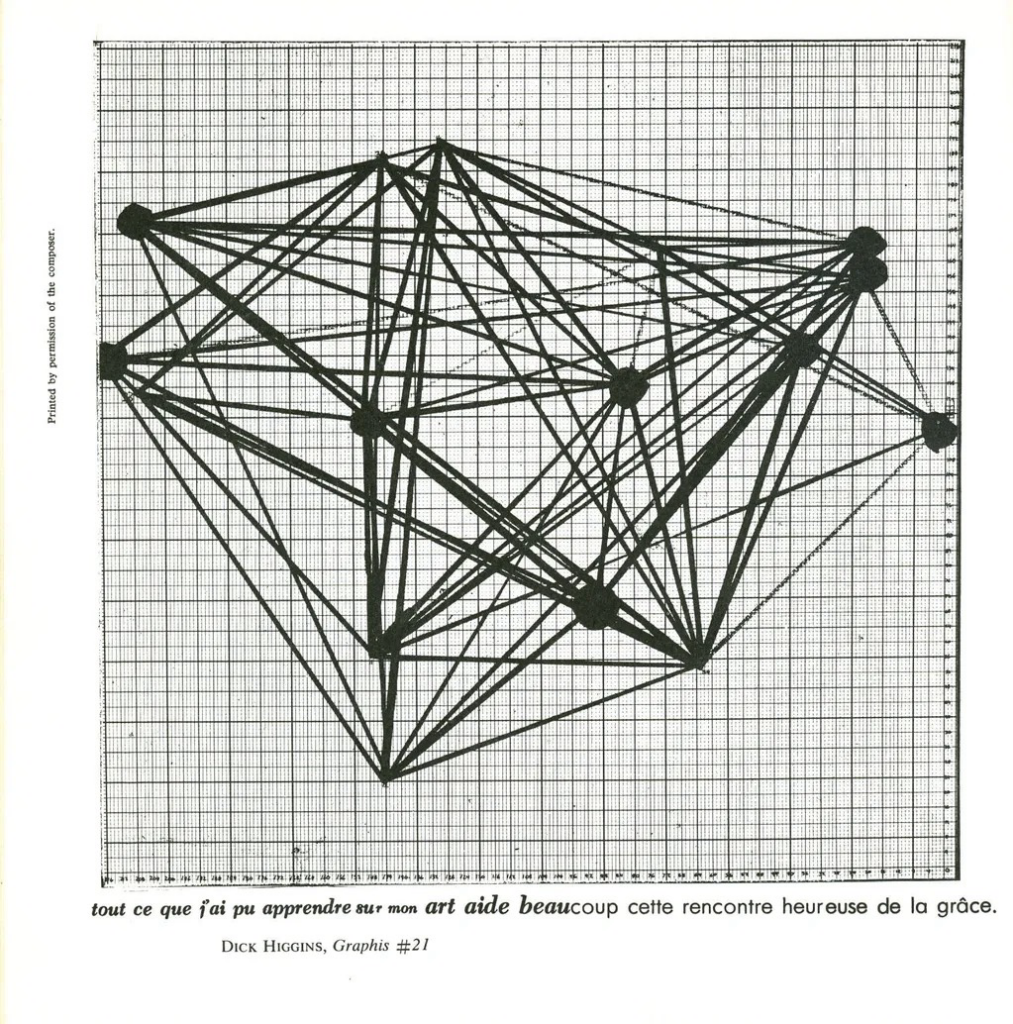A musician’s eye is primed to see, then hear, anything as a score: the contour of distant hills can be played as if it were a melody from left to right. Scrabbly tree bark conjures scrabbly sounds. And birds on a wire might as well be notes on a staff.
In medieval religious and secular European paintings, musical notation is used as a stand-in for the idea of music sounding, based on numerous examples of angels, monks, and animals singing and playing from written music. It’s a kick to “hear” what they are playing, by reading the notation depicted in the art, and fun to pretend that we knew exactly how the scene sounded. Although in this example, a copy of or by an anonymous follower of 15th-century Dutch artist Hieronymus Bosch, I imagine sounds both profane and supernatural, not just sounds of singing from notes on a page!
Composers use written notation of all kinds to direct how music should sound, allowing composers to communicate via the familiar quarter and half notes, treble and bass clefs. The composer knows a performer can re-create her ideas to near perfection with this lingua franca of musicians, that is, until the imaginative composer finds herself throttled by its limitations. New compositional tools were needed, and so the sonic restrictions of traditional notated music are being cast aside. Graphic scores (although one could say that all written scores are graphic) have become more common, and more “playable” as the musicians who interpret them have become accustomed to the practice.
Graphic scores challenge and delight. They are, potentially, conversations between marks on the page and sounds tossed around like objects, not simply interpretations of those marks. For the performer, attention, imagination, and practice transports the experience of sound and object, listening and seeing, to an alternate universe where the player’s attention is at the center — a self-created physical and psychological space for visual and musical collaboration.
I recently spent time with John Cage‘s influential book from 1969, Notations. Indeed, as you will see here, anything can be a score, and composers have a lot to say with many marks or with hardly any. Here are some of my favorites to look at, with links to realizations found online.

Graciela Castillo, El Pozo

Toshi Ichiyanagi, The Field
Two realizations of this score by the Portland, Oregon-based ensemble Extradition:
https://extraditionpdx.com/blog/2018/6/16/the-field-redux

Dick Higgins, Graphis #21

Leave a Reply